A Weekend in the Least-Visited Country in Europe
- Aaron Schorr
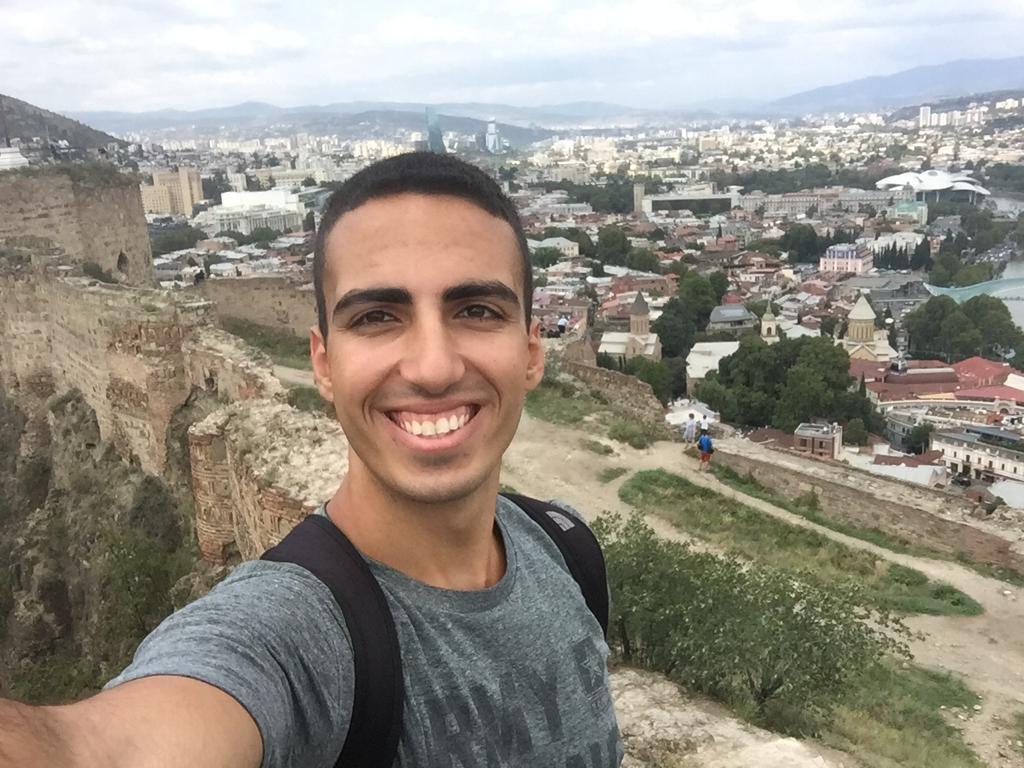
- Aug 18, 2021
- 14 min read
After Turkey, our plan was to visit Ukraine with Bilal, who had come to Istanbul from Bosnia to join us for the trip. As an Indian citizen, however, he had to get a visa to visit Ukraine, and after many efforts he finally managed to secure one for a “personal visit”. The only issue was that the non-flexible entry date was August 16th, two days after we were planning to leave Turkey. We decided therefore to temporarily part ways, and we would all meet up in Odessa. A quick Internet search, however, revealed that flights to Moldova were the same price, and vaccinated travelers with Israeli passports were welcomed with open arms. Knowing very little about Moldova but enticed by the possibility of visiting another former Soviet republic, we booked the flight to Chisinau (technically Chișinău, pronounced “ki-shi-NOW”).
We took a cab to Istanbul’s new (and nameless) airport, perhaps the best-connected in the world. Even at this point in the pandemic, flights were departing the gleaming new terminal to everywhere from Seoul to Khartoum to Samarkand. We reached our check-in counter and handed over our passports.
“Where are your Moldovan ID cards?”
“We don’t have them; we’re Israeli citizens.”
“You don’t have them? Why are you going to Moldova?”
“For tourism.”
“Tourism??”
He furrowed his brow and told us to step aside while nebulous enquiries were being made. This wasn’t particularly surprising, as Moldova is generally considered the least-visited country in Europe - a continent that also contains the states of Liechtenstein, Northern Macedonia, and San Marino. What was surprising, however, was seeing another Israeli passport - that of an Arab Israeli studying medicine in the country. Eventually, we were cleared to board.


A flight attendant rolled off the safety announcements in impressively rapid-fire Russian, English, and Romanian (technically Moldovan, but the two are functionally identical), and we were off. As if to remind me of Turkey’s position, we trailed a Mahan Air flight to Tehran, an airline that had been of particular interest to my Air Force unit. We crossed the Black Sea and less than an hour later, we were descending towards a quilt of rolling green fields and villages that looked incredibly Eastern European even from the air. The bite-size airport terminal was very clean and modern, but the passport control officer spoke very little English. She also didn’t know what Airbnb was, so she was very confused when I said we were staying at a residential address but didn’t have any friends in the country or somebody picking us up. Another officer came, she seemingly copied our entire reservation by hand, and we were free to enter the country. We got a SIM card with 20 GB from the beautifully-named mobile operator Moldcell for the laughable price of 29 lei ($1.7), and I withdrew some cash from an ATM, which gave me a sheaf of bills so small they looked like Monopoly money.

We caught a trolleybus into town, paying the fare of 3 lei (17¢) to an attendant in a red vest holding a wad of cash and tearing off receipts from a small machine to use as tickets. The bus drove down Bulevardul Dacia, an inappropriately wide boulevard lined with trees and dilapidated apartment blocks which served as the first clear sign we were in the former USSR. As we were preparing to disembark, a woman told me to close the window in Russian. A man standing near me also said something, but I couldn’t make out the words. “Извините?” (pardon me?). He repeated himself, and after about 3 seconds it suddenly hit me that he had said that the windows need to be closed when the air conditioning is on - but in HEBREW. I was deeply surprised, and he smiled and said he was coming back from Israel. He wished us a Shabbat Shalom and we got off the bus.
We checked into our Airbnb, a room in a family’s beautiful guesthouse surrounded by a lush garden setting us back $29 a night, and tried to find a supermarket. In Turkey, there had been a bodega or supermarket on nearly every street corner; in Chisinau, these were replaced by pharmacies, which were so frequent they looked like a microeconomics homework problem. We finally found one which was incredibly modern-looking, except the entire place smelled like deli meats, which occupied a good 25% of the store. Welcome to Eastern Europe.

Into the Temple of Doom
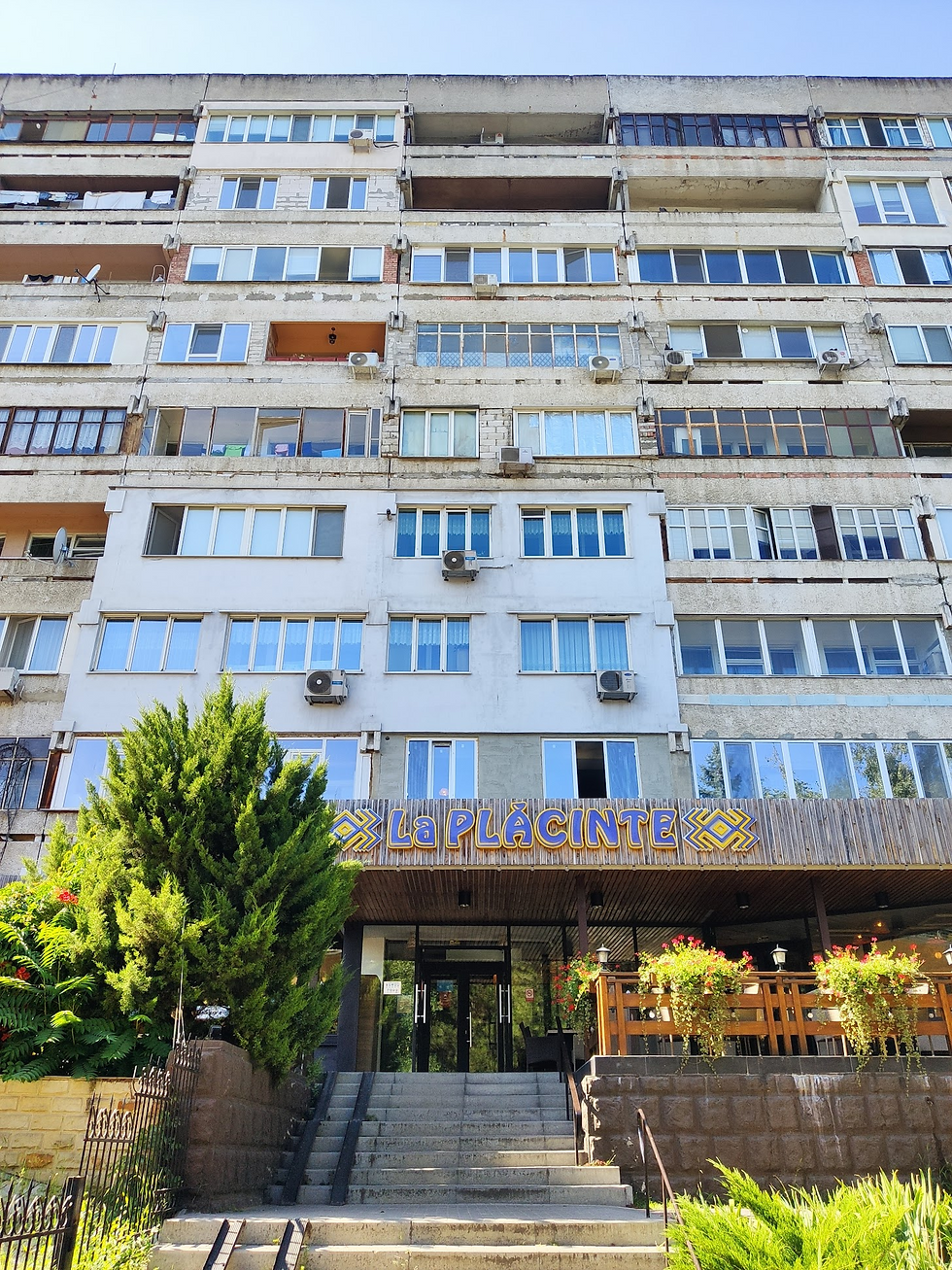
We needed some lunch, and a Moldovan who goes to Yale (and had unfortunately come to the US by then) recommended a place serving local food. Everything in Chisinau is bilingual, so deciphering the menu was remarkably easy: if I didn’t understand the Romanian (which read like confused Italian), I could probably make sense using the Russian. We ordered soup, mămăligă, and the house specialty - plăcintă - which reads like placenta, but is a thin, round pastry filled with cheese, meat, or cherries. The mămăligă was a lot cakier than I had expected, but the food was good and a far cry from the flavors of Turkish food. Midway through the meal, a girl of about 8 or 9 came up to me and presumably asked me for money in Romanian. I shook my head no, and she lunged at me, smacking my beard and driving her fingers into my armpits as the Romanian became more agitated. “Я не могу помои тебя,” (“I can’t help you” in absolutely atrocious grammar) I told her, but to no avail. I had no idea how to react, but luckily, the waiter appeared and grabbed her by the arm to march her off, warning her he would call the police.
The restaurant was just off Cathedral Square, which wasn’t particularly impressive but it did have a cathedral at its center. It was Saturday afternoon, but the place was packed and some sort of service was in full swing. We walked in and a man told us to stand with our backs against the wall as an angelic choir sang in Russian on a balcony above. A priest in a gold and red robe came through, shaking an incense lantern at the worshippers and leaving a thick trail of smoke behind him. Women outnumbered men by about 3:1, dressed in simple, colorful dresses with matching headscarves.
I had never been to an Orthodox church outside Israel before, and this one was a great introduction in how different it was from Western churches. Icons covered every available surface, depicting the likenesses of such characters of Saints Vladimir, Pavel, Andrei, Katerina, Alexander Nevsky, and Dimitry of Bessarabia. Instead of the Russian I had expect to see, however, the writing was all in Romanian, which made for a strange sight. The place was almost oppressively opulent, and I could only sneak some illicit photos from the hip so I couldn’t really capture how over-the-top everything was. The worshippers stood in the building’s foyer and wings, and the center of the building was an entirely golden room occupied by a senior figure (perhaps a bishop?) dressed in a more elaborate robe with a golden-red headdress. On the wall in front of him was a golden ark which looked suspiciously Jewish and some sort of crown. He stayed put with his back to the crowd, only emerging towards the end of the service to cross himself with half a dozen priests in tow, after which golden gates closed behind him and most of the lights went out. The whole thing felt like a scene from an Indiana Jones movie, and I have rarely felt more out of place in my life.
Yotam needed another haircut, so we ducked into a barber shop near the square. To our utter shock, the barber, who had a flaming red beard and a bucket hat, spoke very passable Hebrew. His explanation? “I’m Jewish.” I said I thought all the Jews had left to Israel. "Lots of us came back from Israel because it's very hot and difficult to work and make enough money.” As he cut Yotam’s hair, he told us that the had spent 3 years living in Ashkelon and working for Intel, but he came back because he liked life in Moldova better. His father lived in Germany, and he tried living there as well, but he found it too difficult to compete with the large numbers of Turkish and Arab immigrants. He clearly liked Moldova, but he was confused as to why we would come there, especially after I said I lived in the US. "Why would you come to Moldova and Ukraine? You can go to Miami, Cuba, Dominican Republic.” When we said we were going to Odessa from here, he got very serious. “When you meet a girl at a party there, if she tells you 50 Euros an hour, be very careful. She might put something in your drink, you fall asleep, and she’ll steal all your money.” I had a feeling Odessa was going to be a major culture shock.
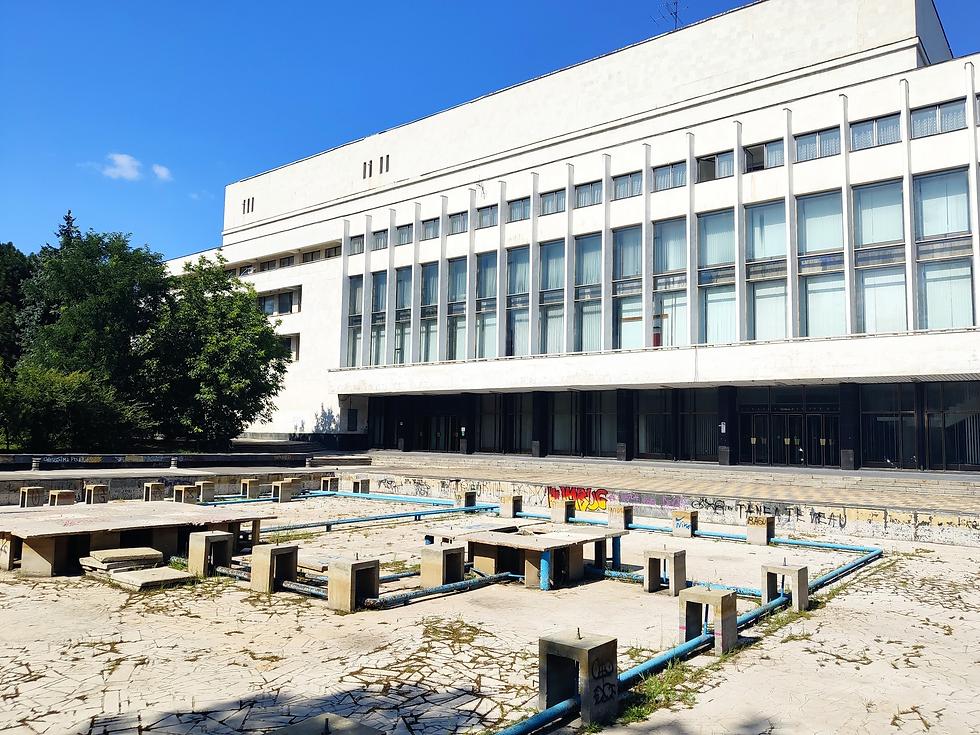
Moldova’s Hottest Nightlife
Chisinau’s main monuments, such as they exist, are concentrated on several blocks along the main boulevard. Both the boulevard and the main park are named after Ștefan cel Mare și Sfânt (Stephen the Great and Holy), who ruled Moldavia in the latter half of the 15th century and is now the patron saint of the entire country. We saw Government House, an ugly mass of concrete with an even larger mass of asphalt in front of it, the Triumphal Arch (commemorating the 1840 Russo-Turkish War), and the national parliament, built in classical Communist style. With not quite 2.7 million inhabitants, Moldova was small, but its capital felt even smaller. During our impromptu sightseeing tour, we jaywalked across the boulevard in front of a police officer, which are called carabinieri. He walked over to us with a stern face and started speaking to us in Russian. We asked him if he spoke English. “Uhh… Speak Russian?” We said we didn’t. He shrugged and made hand gestures indicating that we should cross at a crosswalk. I nodded and said “xорошо”, (alright) but he didn’t find it suspicious and walked away.

It being a Saturday night, I tried making inquiries about where was a worthwhile place to go out. My Moldovan friend from Yale, his friend I had spoken to, and our Jewish barber all recommended Piana Vyshnia, an outdoor bar among the various monuments. The bar sells only one drink - Vyshnia, an Eastern European cherry liqueur - by the glass or by the bottle. The drinks were consumed outside, where there was a DJ playing between outdoor tables and benches from a nearby park. It seemed like the entire city was in attendance (and that probably wasn’t too far from reality), from young adults in very bright clothing, to a group of middle-aged people celebrating a birthday with stick lights on their heads, to two very inebriated homeless men who were having the times of their lives dancing to the music, which alternated between remixed Western classics and awful Russian hip-hop.
We spoke to a couple locals, but were eventually drawn to the sound of English. We met two fellow travelers, and discovered that the conversation starter in Moldova was “why are you here?” The first person was Yusuf, a young civil engineer from Istanbul, who was spending time away from Turkey in order to be able to enter the UK without quarantining, where he was pursuing a master’s degree. As a result of a summer spent working at a festival town in North Dakota, his English was fantastic and we swapped stories about Turkish idiosyncrasies. The other person was Marc, a seasoned American traveler for whom Moldova was the 76th country he had visited. He was one of those restless people who would randomly quit their jobs and travel for a while, then return home and do it all over again. At midnight fireworks exploded overhead, and the music abruptly dropped by 50%. It was a decently fun evening for a city where we knew nobody, and ended up walking the 2 km home because the taxis all wanted higher fares, either by driving to further destinations or by charging an exorbitant price.

A Morning Monument Walk
The next morning, we headed to a pedestrian street behind Cathedral Square for breakfast. We walked through two parks, both of which had branches of Bonjour Café serving croissants and playing French music. The latter park also had lots of EU flags, including a blue turf display with golden stars, despite Moldova not being a member state. After the busiest bar in Moldova the previous night, the French theme continued at what was clearly the busiest café in Moldova, boasting obscenely French decor, a 30-page menu, and a wait staff wearing ridiculous plastic shields covering only their mouths. For Moldova, the prices weren’t cheap, but they made great sirniki, Eastern European pancakes stuffed with cheese and served with the odd combo of sour cream, jam, and smoked salmon.
We walked away from town on Bulevardul Grigore Vieru, another arrow-straight Soviet creation lined with trees and ugly buildings. We first passed Moldova’s central bank, a concrete structure that looked better suited to serve as an apartment block, to reach the memorial to the Chisinau ghetto, located on the corner of Strada Ierusalim (Jerusalem St.). At its peak, the ghetto held about 13,000 people, most of whom were later exterminated in Polish camps, and they were commemorated by a short poem in Russian, Romanian, and Yiddish. Further down the avenue was a much larger monument to Eroilor Comsomolului Leninist (Heroes of the Leninist Struggle for Freedom), and another to Moldova’s Olympic achievements (2 silver and 4 bronze medals since LA 1996).
We crossed the Bîc River - not much more than a stream, really - to reach Chisinau’s Soviet-era circus, abandoned since independence. It was an intricate brutalist structure suggesting past grandeur, but slowly falling apart. We could only glance inside through some glass windows, since every possible point of entry was either boarded up or fenced in, with trilingual signs warning that trespassing was punishable by fine and arrest.
“Alive Legend of Moldova”
From the circus, it was time to head to Moldova’s largest tourist attraction, Cricova. After the first taxi we ordered canceled on us because my Russian was not up to standard, another agreed to drive us the 15 kilometers to the village on the outskirts of Chisinau. By now, I was used to Istanbul taxi drivers, and the calm, quiet ride was a refreshing break, even if the scenery was all soulless boulevards and cracked pavement with weeds. The one thing Chisinau did have going for it, though, was how green it was. Besides the frequent parks, which were all meticulously kept and full of people enjoying the summer sun, there were large trees lining every street.
What makes Cricova an attraction is the wine cellar dug underneath the village, the second-largest of its kind in the world (the first is on the opposite end of Chisinau and this may be Moldova’s only global superlative). We paid the 450 lei ($26) entrance fee and waited for a guided tour with a random assortment of other tourists, who probably compromised a solid proportion of the entire foreign population in the country. Our guide was the Platonic embodiment of an Eastern European tour guide - dark hair, severe face, nasal voice, odd English intonation. Our group boarded a pair of electric golf-cart-like contraptions, which briskly whisked us away into the entrance to the tunnels. The temperature immediately dropped nearly 15˚ C, a fact which seemingly everyone beside us had prepared for by bringing warm clothing in the summer heat.

We sped through the tunnels and the carts drew to a halt alongside long rows of wine barrels. Our guide explained that the cellar was dug here during Soviet times to take advantage of the natural limestone formations, which assured both easy digging and a year-round temperature of 12-14˚ C (53-57˚ F), a far cry from the 28˚ (82˚) outside that afternoon. There were 120 km of tunnels in all, which are home to 1.3 million bottles of wine.

We next visited the underground cinema, where we were served a glass of wine and shown a promotional film about the cellar. The sip I had tasted like soap, but the video was worth coming to Moldova on its own. The video was narrated by a man with overly suave voice and a thick Romanian accent, who introduced Cricova as “alive legend of Moldova”, part of the “glorious history” of the country’s winemaking tradition, which was briefly introduced. This was part of a national struggle, as past “enemies” (an implicit reference to the Ottomans) forbade wine making in Moldova. Next followed an odd pseudo-philosophical rant about life: “What is wine? What is culture? Is it the foundation of our people? Does it bring us together?” Finally, the narrator told us with immense pride that every other bottle of Soviet wine was made in Moldova. After having visited Georgia and hearing a similar spiel, I desperately wanted the two countries to engage in a post-Soviet wine showdown.
Next, we visited the production line of “Şampanie” sparkling wine, which supposedly could produce half a million bottles a year on a single line. This alone was believable, but our guide claimed that only six women worked on the line, each capable of flipping 30,000 bottles a day. Yotam remarked that it felt like Theresienstadt, the “model labor camp” the Nazis built to show the Red Cross how well they were treating the Jews.
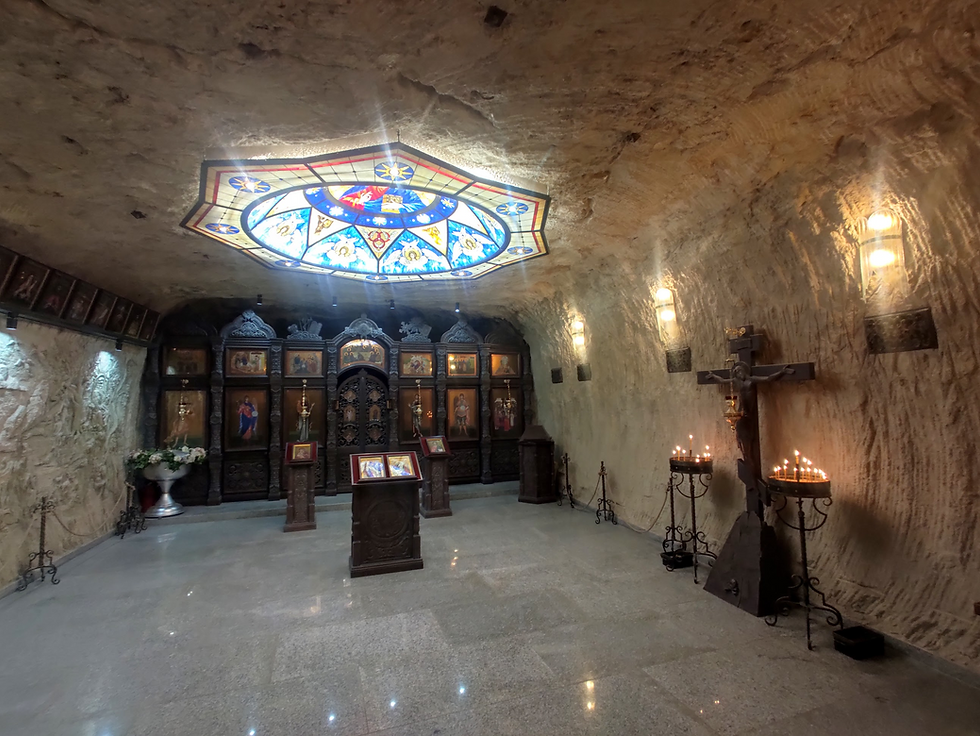
After an obligatory visit to an underground Orthodox chapel, the final stop was Moldova’s national wine collection, a wineglass-shaped cavern with rows upon rows of old vintages. The room was chilly and humid to the point of our breath steaming, so the bottles were all label-free and sealed with wax, which was mostly covered with mold. The shelves mostly had labels, showing us that we were looking at Czech, Uzbek, and Georgian wine from the 1930s and 50s, among others.
The rim of the wineglass, so to speak, was the international collection, which held the wines of the rich and powerful from all over the world, with some of the most prominent figures shown on a map in the entrance. Vladimir Putin, John Kerry, Federica Mogherini, Recep Erdogan (how haram!), and Jill Biden were all in attendance, as were more questionable figures such as Gurbanguly Berdimuhamadov, Aleksandr Lukashenko, and Israel’s very own Avigdor Liebermann. The “pearl of the collection” was a 1902 bottle of wine from Jerusalem, the last remaining bottle from a collection of only 40 ever made. Most of our group headed into a tasting room, one of several such absurdly opulent spaces, and we headed out through a gift shop selling more types of Moldovan wine and brandy than I thought possible.
In the City of Slaughter
We were out of tiny Moldovan cash, so we had to make the 1.5-kilometer walk to the center of the village to find an ATM. Finding the town center anywhere in the former Soviet Union is easy - you walk past the memorial with the names of the sons of the town killed in the Great Patriotic War until reaching the Park of Rest and Culture. In this case, the park had a meticulous collection of flowers and bronze busts of all the former kings of Moldova, with Ștefan cel Mare raised above the rest. The contrast between the park and the decrepit apartment buildings behind it could not be more stark. The Russian taxi app we were using showed no cars in the area, so we tried unsuccessfully to hitchhike until we had a better Moldovan app installed and operating.

The taxi dropped us off at the curiously-named Parcel Anelul in western Chisinau, where there was a memorial to the 1903 pogrom that happened in the city. At least 49 Jewish people were killed in the pogrom, which shocked the world and served as a major catalyst for the Zionist cause. To be fair, it may have been the single most significant event in the city's history. Broken tombstones surrounded a somber stone monument written in 4 languages. Behind us, little children were playing in a fountain as their parents sat on benches in the shade, and the first stanza of In the City of Slaughter, an epic poem written by Haim Nahman Bialik after visiting Chisinau in 1903, seemed fitting:
קוּם לֵךְ לְךָ אֶל עִיר הַהֲרֵגָה וּבָאתָ אֶל-הַחֲצֵרוֹת,
וּבְעֵינֶיךָ תִרְאֶה וּבְיָדְךָ תְמַשֵּׁשׁ עַל-הַגְּדֵרוֹת
וְעַל הָעֵצִים וְעַל הָאֲבָנִים וְעַל-גַּבֵּי טִיחַ הַכְּתָלִים
אֶת-הַדָּם הַקָּרוּשׁ וְאֶת-הַמֹּחַ הַנִּקְשֶׁה שֶׁל-הַחֲלָלִים.
Arise and go now to the city of slaughter;
Into its courtyard wind thy way;
There with thine own hand touch, and with the eyes of
thine head,
Behold on tree, on stone, on fence, on mural clay,
The spattered blood and dried brains of the dead.
[...]
וּבְרִבֲבוֹת חִצֵּי זָהָב יְפַלַּח הַשֶּׁמֶשׁ כְּבֵדְךָ
וְשֶׁבַע קַרְנַיִם מִכָּל-רְסִיס זְכוּכִית תִּשְׂמַחְנָה לְאֵידְךָ,
כִּי-קָרָא אֲדֹנָי לָאָבִיב וְלַטֶּבַח גַּם-יָחַד:
הַשֶּׁמֶשׁ זָרְחָה, הַשִּׁטָּה פָּרְחָה וְהַשּׁוֹחֵט שָׁחַט.
The thousand golden arrows of the sun,
Will flash upon thy malison;
The sevenfold rays of broken glass
Over thy sorrow joyously will pass,
For God called up the slaughter and the spring together,—
The slayer slew, the blossom burst, and it was sunny weather!
We crossed the park and headed up the hill to find the Jewish cemetery. Walking down a road with tiny houses and a shirtless man working on a car engine with drum and bass music blasting, we thought we might have to hop the fence, until we are to a small entrance. The cemetery was messy and unkempt, but the most interesting part was the languages on the tombstones. The overwhelming majority was in Russian, with a smattering of Yiddish, Hebrew, and Romanian. I was expecting more Yiddish, especially on the older graves, and there were many more recent graves than I had imagined.

We returned to town and had dinner at an Italian restaurant. The food was remarkably good, perhaps not surprisingly given the size of the Moldovan diaspora in Italy, as evidenced by the large numbers of Italian license plates on the streets of Chisinau. A group of three passed us speaking Hebrew, and we pulled them over. One was studying dentistry in Chisinau and the others had come to visit. They had just come from Odessa, where they had gone to two parties a night, and they perfectly fit the bill of the unsavory Israeli crowd that that city draws.
On our way home, we passed the headquarters of the Moldovan Liberal Party. Their main slogan was “Unite Romania and Bessarabia (Moldova’s name in the Russian Empire)!” This is a fairly popular idea in Moldova, backed by the fact that the two countries formed the Kingdom of Romania before WWII, except that a certain actor in the region is very much opposed to the idea - Russia. We learned a lot more about that the following day.
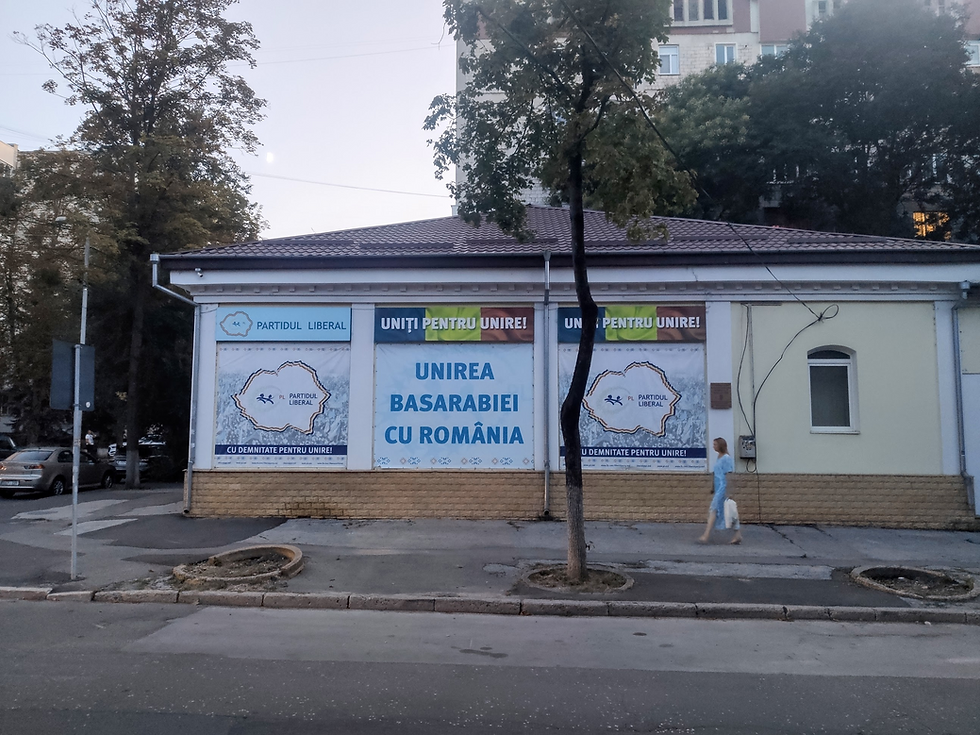















































Commenti